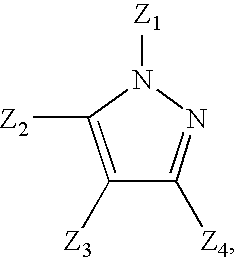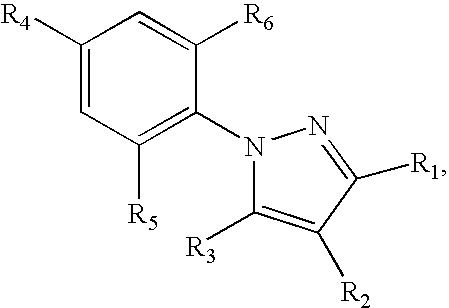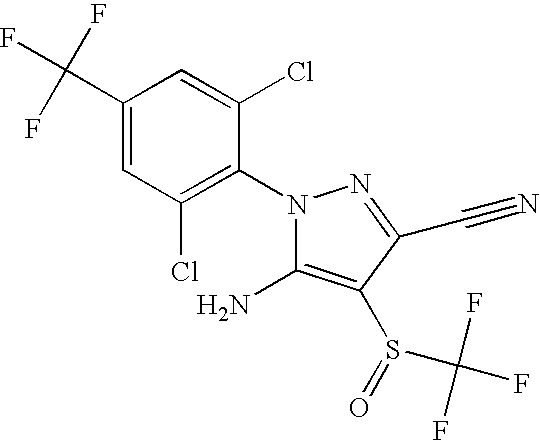Lignocellulosic composite material and method for preparing the same
a technology of lignocellulosic and composite materials, applied in the field of lignocellulosic composite materials, can solve the problem of repeated infestations of insects and suffer the same fate, and achieve the effect of prolonging the li
- Summary
- Abstract
- Description
- Claims
- Application Information
AI Technical Summary
Benefits of technology
Problems solved by technology
Method used
Image
Examples
examples
[0049]The following examples describe the formation of a lignocellulosic composite material by adding and reacting the following parts.
[0050]
TABLE 1Example 1Example 2Example 3Example 4Amount,Amount,Amount,Amount,gmPbwgmPbwgmPbwgmPbwBinder Resin283.833.0282.523.11182.444.81183.584.8Polyisocyanate282.42—282.24—1181.29—1181.29—Insecticide1.41—0.28—1.15—2.29—Lignocellulosic9076.3897.09076.3897.00.00.00.00.0Particles ALignocellulosic0.00.00.00.024566.5695.224425.9595.2Particles BTotal9360.21100.09358.90100.025749.0100.025609.53100.0
[0051]The polyisocyanate is LUPRANATE® M20SB, commercially available from BASF Corporation. The pyrazole insecticide is fipronil. The lignocellulosic particles A are a southern yellow pine mix having a moisture content of about 8.27%. The lignocellulosic particles B are Aspen particles having an average moisture content of about 6.76%.
[0052]In Examples 1 and 2, the lignocellulosic composite material was formed having a thickness of 0.437 inches with a density ...
PUM
| Property | Measurement | Unit |
|---|---|---|
| thickness | aaaaa | aaaaa |
| thickness | aaaaa | aaaaa |
| temperatures | aaaaa | aaaaa |
Abstract
Description
Claims
Application Information
 Login to View More
Login to View More - R&D
- Intellectual Property
- Life Sciences
- Materials
- Tech Scout
- Unparalleled Data Quality
- Higher Quality Content
- 60% Fewer Hallucinations
Browse by: Latest US Patents, China's latest patents, Technical Efficacy Thesaurus, Application Domain, Technology Topic, Popular Technical Reports.
© 2025 PatSnap. All rights reserved.Legal|Privacy policy|Modern Slavery Act Transparency Statement|Sitemap|About US| Contact US: help@patsnap.com



